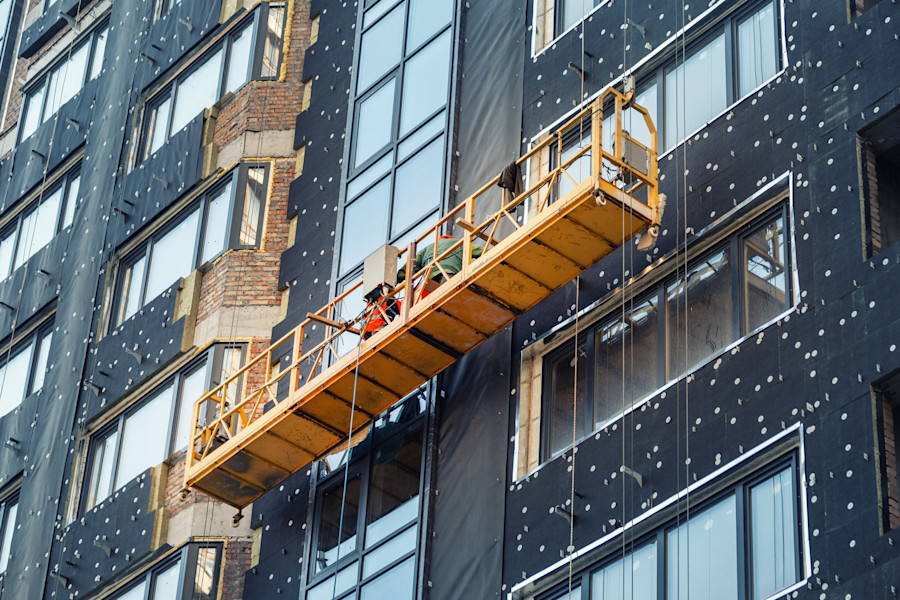Background
AAI Limited (AAI) was the insurer of Fairview Architectural Limited (Fairview) under several policies covering the period 14 February 2012 to 30 May 2016. During this time, Fairview manufactured and supplied aluminium composite panels (ACP). The ACP were affixed using a top hat sub frame to the exterior of two high-rise residential buildings at Warwick Farm, owned by the Owners of Strata Plan 91086 (SP).
In March 2019 (subsequent to the expiry of the last of the policies), SP was directed by Liverpool City Council to remove the ACP on each of the buildings. In June 2019, SP commenced representative proceedings against Fairview on its own behalf and on behalf of the class of persons who owned or had a leasehold interest in either building which had been fitted with ACP panels supplied between 13 June 2009 and 13 June 2019.
In July 2020, Fairview went into external administration, following which Wigney J granted leave for SP to proceed against Fairview pursuant to section 444E of the Corporations Act 2001 (Cth).1
Primary decision
In July 2023, Wigney ordered:2
-
AAI be joined to the proceeding as the second respondent pursuant to r 9.05 of the Federal Court Rules (2011) (FCR); and
-
Leave be granted for SP to bring and continue the proceeding against AAI pursuant to r 5 of the FCR.
AAI sought leave to appeal from the Primary Decision.
The appeal
On 4 February 2025, the Court (Markovic, Halley, and Goodman JJ) dismissed AAI's application, with costs as agreed or taxed.3
It was accepted that leave to appeal the Primary Decision was necessary as an interlocutory decision.4 Accordingly, AAI sought leave on the following grounds:
- the Primary Decision was attended by sufficient doubt to warrant granting leave to appeal; and
- the orders made in the Primary Decision would cause substantial injustice to AAI if allowed to stand.
Applying Decor Corporation Pty Ltd v Dart Industries Inc,5 the grounds are considered as inter-related and both had to be proven.6
Key issues
Appropriateness of interlocutory determination
One of the grounds of the draft appeal contended by AAI, was that the primary judge ought to have decided on a final basis, rather than interlocutory, that it was entitled to disclaim liability within the meaning of s 5(4) of the Civil Liability (Third Party Claims Against Insurers) Act 2017 (NSW) (Third Party Claims Act).
The Court considered such determination was an exercise of discretion, requiring AAI to demonstrate that the primary judge had erred in a manner akin to that of House v the King.7 However, the matters addressed by the primary judge in arriving at the Primary Decision demonstrated detailed and careful analysis, which were relevantly identified as follows:
- SP had an arguable case against Fairview (J[44], [67] to [69]);
- there was an arguable case that the policies responded to SP's claim or potential liability to SP and AAI had not established an entitlement to disclaim liability under the policies (J[45], [46], [70] to [171] and [178] to [179]);
- AAI was not entitled to disclaim liability on the basis of any exclusion clauses (J[47], [172] to [177]); and
- there was no reason not to exercise the discretion favourably to SP (J[49], [180]).
The approach taken by the primary judge was ultimately considered "consistent with a strong line of authority".8
Misdirection of appropriate statutory test
AAI also contended the primary judge had caused himself a misdirection in applying the statutory test. AAI submitted the primary judge had erred in favour of a test that only required SP to establish that it had an arguable case, without engaging with section 5(4) of the Third Party Claims Act. It was AAI's contention that, if properly considered, that section would have required refusal of SP's application, if it could establish an entitlement to disclaim liability.9
However, this was considered a "false dichotomy", as the "question whether an insurer is entitled to disclaim a liability is not separate from, but forms part of, the inquiry as to whether there is an arguable case. If the insurer can establish such an entitlement then there can be no arguable case". The Court considered that the primary judge had recognised the effect of section 5 of the Third Party Claims Act in determining AAI had failed to meet the requisite establishment of an entitlement to disclaim liability.10
Clear and definitive factual findings
It was also submitted that the primary judge had erred in making “clear and definitive findings in respect of the coverage issue, based on the detailed evidence before the Court, rather than resorting to findings based on what the evidence arguably established”. It was contended that such approach risked prejudicing AAI's conduct of its defence.
This was not accepted, as the determination AAI had not established an entitlement to disclaim liability had been made on the evidence “currently before the Court”.
Further, the Court concluded it was open to the primary judge to make detailed findings regarding the effect of removing the ACP, and thus did not err in doing so. Further, as the Primary Decision was interlocutory, no final decision had been made regarding the evidence that may be adduced at a final hearing.
It was for these reasons that the Court considered the primary judge’s decision to determine the application on an interlocutory, rather than a final, basis was not attended by sufficient doubt to warrant a grant of leave to appeal.11
Substantial injustice
In determining that substantial injustice had not been established, the Court considered:
- the question of whether the policies responded was yet to be determined on a final basis, and AAI would not be deprived of the opportunity to contend the policies were not responsive at a final hearing; and
- if AAI could establish that it ought not to have been joined on the basis of non-responsive policies, it would have a prima facie entitlement to its costs; and
- there was no evidence that AAI was unable to bear its costs or that incurring the costs would cause it any difficulty.12
Conclusion
This decision provides a useful summary of the position the court will likely take in determining questions of leave concerning whether proceedings may be brought or continued directly against insurers pursuant to the Third Party Claims Act. It is also a timely reminder of the prohibiting operation and limited recourse insurers will have to appeal from joinder orders under section 24(1AA)(b)(i) of the Federal Court of Australia Act 1976 (Cth).
More importantly, however, for insurers and building practitioners, this interlocutory appeal decision means that we will need to wait for any final hearing of the proceeding for certainty as to whether a long line of authority on the meaning of "property damage" will be overturned, with that term extended to the removal of defective ACP cladding and trigger third party liability policies in place at the time the cladding was installed.
The decision can be accessed here: AAI Ltd v The Owners - Strata Plan No 91806 [2025] FCAFC 6
1 The Owners – Strata Plan No 91086 v Fairview Architectural Pty Ltd [2020] FCA 1892
2 The Owners – Strata Plan No 91086 v Fairview Architectural Pty Ltd (No 3) [2023] FCA 814
3 AAI Limited v The Owners – Strata Plan No 91086 [2025] FCAFC 6
4 Ibid [34]
5 [1991] FCA 844; (1991) 33 FCR 397 at 398 to 399 (Sheppard, Burchett and Heerey JJ)
6 AAI Limited v The Owners – Strata Plan No 91086 [2025] FCAFC 6 at [34]
7 [1936] HCA 40; (1936) 55 CLR 499 at 505 (Dixon, Evatt and McTiernan JJ, Starke J agreeing)
8 AAI Limited v The Owners – Strata Plan No 91086 [2025] FCAFC 6 at [40]
9 Ibid at [45]
10 Ibid at [46]
11 Ibid at [48]
12 Ibid at [68]
All information on this site is of a general nature only and is not intended to be relied upon as, nor to be a substitute for, specific legal professional advice. No responsibility for the loss occasioned to any person acting on or refraining from action as a result of any material published can be accepted.
 Client portal
Client portal












